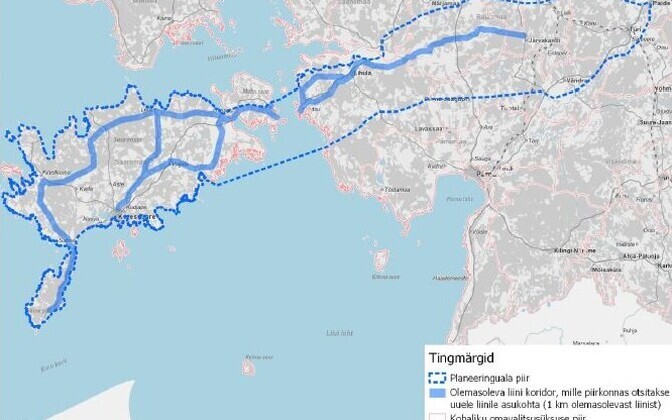The state assumes the fourth Estonia-Latvia power link will be an overhead line, but Saaremaa municipality wants the underground cable option assessed as well.
The state is proceeding with the national spatial plan for the fourth Estonia–Latvia power link under the assumption that it will be built as an overhead line and has no intention of considering an underground cable alternative.
According to TSO Elering’s calculations, underground cable lines have lower transmission capacity than overhead lines, which would mean building multiple parallel cables to achieve the same result. This would make the project roughly ten times more expensive than constructing an equivalent overhead line. The added cost would also be reflected in transmission service prices, ultimately affecting the overall price of electricity.
However, the Saaremaa municipal government is not satisfied with the plan to build an overhead line. Together with the Saaremaa Energy Agency, the municipality sent a letter to the Ministry of Economic Affairs and Communications (MKM) this spring, requesting that the special plan include a clear explanation for why the overhead option was being favored. The ministry responded by citing Elering’s arguments against the feasibility of underground cables, but the reply did not satisfy the municipality. This week, Saaremaa Mayor Mikk Tuisk contacted the ministry again.
Tuisk stated that, in the municipality’s view, the claim that an underground cable is unfeasible is arbitrary, since the option has not actually been assessed and therefore cannot be substantively ruled out.
He also rejected the argument that underground cables are too expensive. According to Tuisk, while the initial infrastructure investment may be higher, the full cost analysis should also include maintenance, repair and decommissioning expenses, as well as land use costs.
“Other associated costs and the greater impact of an overhead line compared to an underground cable haven’t been considered at all,” the mayor said.
As a result, Tuisk proposed a full lifecycle cost comparison between the overhead and underground options.
“If there’s no concrete data available for analysis and no assessment has been carried out, then the claim that an underground cable is too costly or otherwise unreasonable for society as a whole is not justified,” Tuisk said.
The mayor added that opposition among Saaremaa residents stems primarily from the extensive land-use restrictions and visual impact of a high-voltage overhead line — concerns that would not apply to an underground cable.
“We also believe Elering’s claims about the massive price difference between underground and overhead cables are unsubstantiated — especially considering that the initial plan called for two separate 330 kV overhead lines, whereas now only one is planned,” Tuisk added.
The government launched the national spatial plan and strategic environmental assessment for the fourth Estonia–Latvia power link in February last year. The Ministry of Economic Affairs and Communications is overseeing the process, which aims to determine how best to build the Estonian section of the link from Paide through Muhu and Saaremaa to the Sõrve Peninsula.
The planning process will take years and construction is not expected to begin before the next decade.
The ministry has until November 7 to respond to Saaremaa’s request for further clarification.
—
